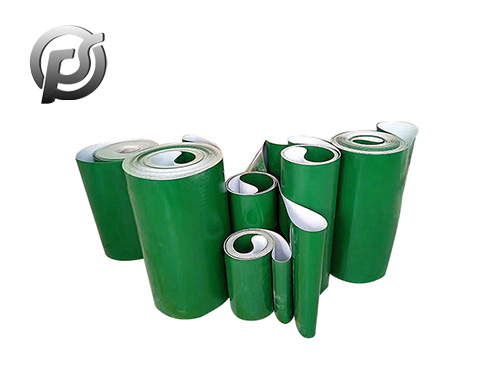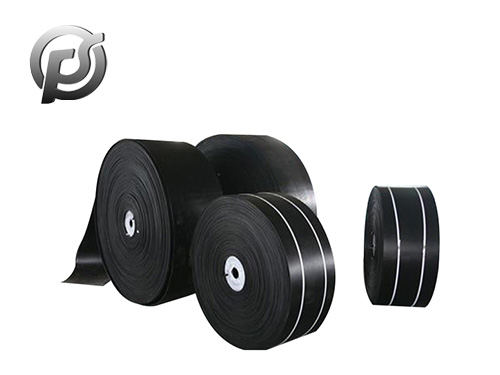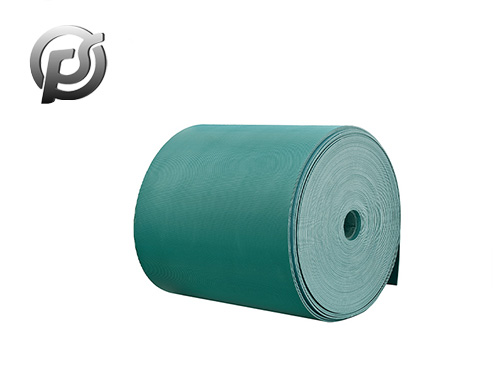1. Arrange traction and auxiliary traction equipment according to the evacuation route of
conveyor belt.
2. Use the guide chain and steel wire buckle to lift the tensioning counterweight or pull the tensioning trolley forward to the maximum position, so that the conveyor belt is completely relaxed.
3. Remove the devices that hinder the rotation of the drum and the passing of the conveyor belt and clip, such as the backstop and cleaner.
4. Fix the winch about 20 meters away from the new belt, and fix the old belt with a clip. Cut the belt 15 meters below the belt tensioning counterweight and pull the broken end of the old belt out of the window of the belt tensioning counterweight room. The new belt is firmly connected with the old belt broken end with the iron clip, and the other old belt broken end is stuck with the winch wire rope. Slowly pull the winch wire rope until it is taut, release the clip on the old belt, continue to pull the winch wire rope, the old belt is pulled down, at the same time, the new belt is also brought to the large Angle belt conveyor.
5. Pull out the old belt with the winch in one section, and continue to pull the new belt with the winch until the broken end of the new belt reaches the position suitable for making the joint. Cut off the new belt according to the length of the new conveyor belt.
6. Pass the steel wire rope of the hoist from the head of the belt with a large Angle to the top of the frame, and use the fixed reversing pulley to make the steel wire rope of the hoist return from the head of the belt to the other broken end and broken end of the new belt.
7. Turn on the winch and slowly pull the second new broken end of the belt to the joint position on the high Angle belt machine. Fix the belt with clips at both ends of the two broken ends and prepare the vulcanized joint.
8. Remove the idlers and supports on the site, set up an inspection and maintenance platform, mark the broken ends of the two new belts, strip the heads, coat the hair, and apply glue. After the solvent of the glue coated is evaporated, align the two ends of the conveyor belt, add sealing glue, and then smash it with a rubber hammer.
9. Use vulcanizing machine to bond the belt joint, install the temporarily removed upper roller, and lower the conveyor belt to tighten the counterweight.
10. Check the working condition at the end, make sure that the site is cleared and the maintenance personnel leave the maintenance site.
11. Power belt conveyor with large Angle test run.
 Optimizing Operations with PE Conveyor Belts: Durability, Efficiency, and Versatility
Optimizing Operations with PE Conveyor Belts: Durability, Efficiency, and Versatility
 Exploring the Efficiency and Versatility of Light Conveyor Belts
Exploring the Efficiency and Versatility of Light Conveyor Belts
 Polyester Conveyor Belts: Enhancing Efficiency and Reliability in Material Handling
Polyester Conveyor Belts: Enhancing Efficiency and Reliability in Material Handling